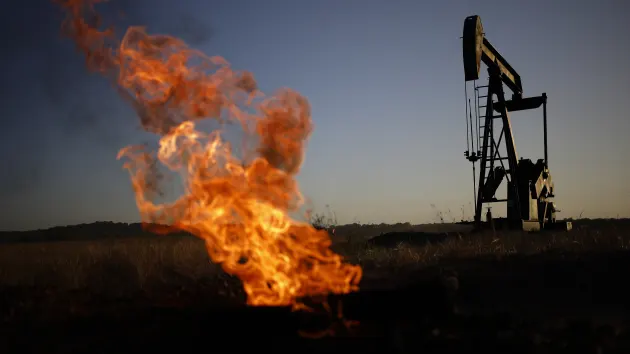Following the Organization of Petroleum Exporting Countries’ decision to postpone a crucial meeting on production cuts for this weekend, U.S. crude prices fell on Wednesday.
The West Texas Intermediate contract for January saw a morning drop of roughly 5% to $73.85 a barrel, but it recovered most of those losses.
The final price of US crude was $77.10 per barrel, a decrease of 67 cents or.86%. The January Brent contract dropped 49 cents, or.59%, to end at $81.96 per barrel.
The meeting of energy ministers has been postponed until next Thursday, according to a statement from OPEC. Delegates told Bloomberg that Saudi Arabia is having difficulty persuading Angola and Nigeria to accept lower output targets, but the organization did not give a reason.
Prices increased late last week and early this week due to traders’ growing expectations that OPEC and its allies, known as OPEC+, might carry out additional production cuts.
However, Tamas Varga, an analyst with PVM Oil Associates, noted that compliance is a significant challenge for OPEC+ because many countries have an incentive to not adhere to their production quotas.
“From now on, compliance will be weak,” Varga declared. He specifically mentioned Russia, pointing out that it needs money for its conflict in Ukraine.
Oil prices have dropped sharply from their peak in September as record non-OPEC production clashes with China’s worries about demand after six months of declining exports.
According to John Kilduff, an oil analyst at Again Capital, “it’s undermining the Saudi efforts to get the price really back to $100 a barrel plus” on “Power Lunch” on Wednesday.
On Wednesday, U.S. data reinforced that picture. According to data released by the Energy Information Agency, crude production is estimated to be 13.2 million barrels per day, a record level and 1.1 million bpd higher than the same period last year.
For the week ending Nov. 17, domestic crude inventories—aside from the strategic reserve—rose by 8.7 million barrels. In the meantime, the supply of finished gasoline fell by 469,000 barrels from the previous weak, suggesting a slowdown in US demand.
According to Kilduff, U.S. crude might reach $70 per barrel and even fall as low as $60 per barrel, especially if the northern hemisphere experiences a mild winter.
The supply and demand situation will benefit American consumers financially even though it may irritate OPEC. According to GasBuddy, gas prices in the United States are expected to average $3.25 per gallon on Thursday. Since 2020, that would be the lowest gasoline price on Thanksgiving.
Since 2022, OPEC+ has removed 5.16 million barrels from the market every day. This comprises 1.5 million bpd of voluntary reductions from Saudi Arabia and Russia, and 3.66 million bpd from the group.
In recent weeks, Brent has dropped below $80 per barrel despite those significant cuts. According to Goldman Sachs, OPEC will maintain Brent’s price in the $80–$100 per barrel range by using its pricing power.
The majority of analysts believe that OPEC+ will continue its current cutbacks through 2024, but they would not rule out the possibility of further cuts in light of the state of the market.
In an additional move to help free the numerous hostages detained in Gaza, Israel and Hamas agreed to a four-day ceasefire on Wednesday. Despite the growing doubt among traders that a regional conflict is likely, oil prices surged in October due to fears that the war might spread throughout the Middle East.
OPEC, which maintains that market fundamentals are solid, has attributed the recent decline in crude prices to speculators. But, Varga noted, investors aren’t currently buying OPEC’s story.
Investors don’t really think that OPEC will be as tight as it has been suggesting for the fourth quarter of this year and the first one or two quarters of the following year, according to Varga.





